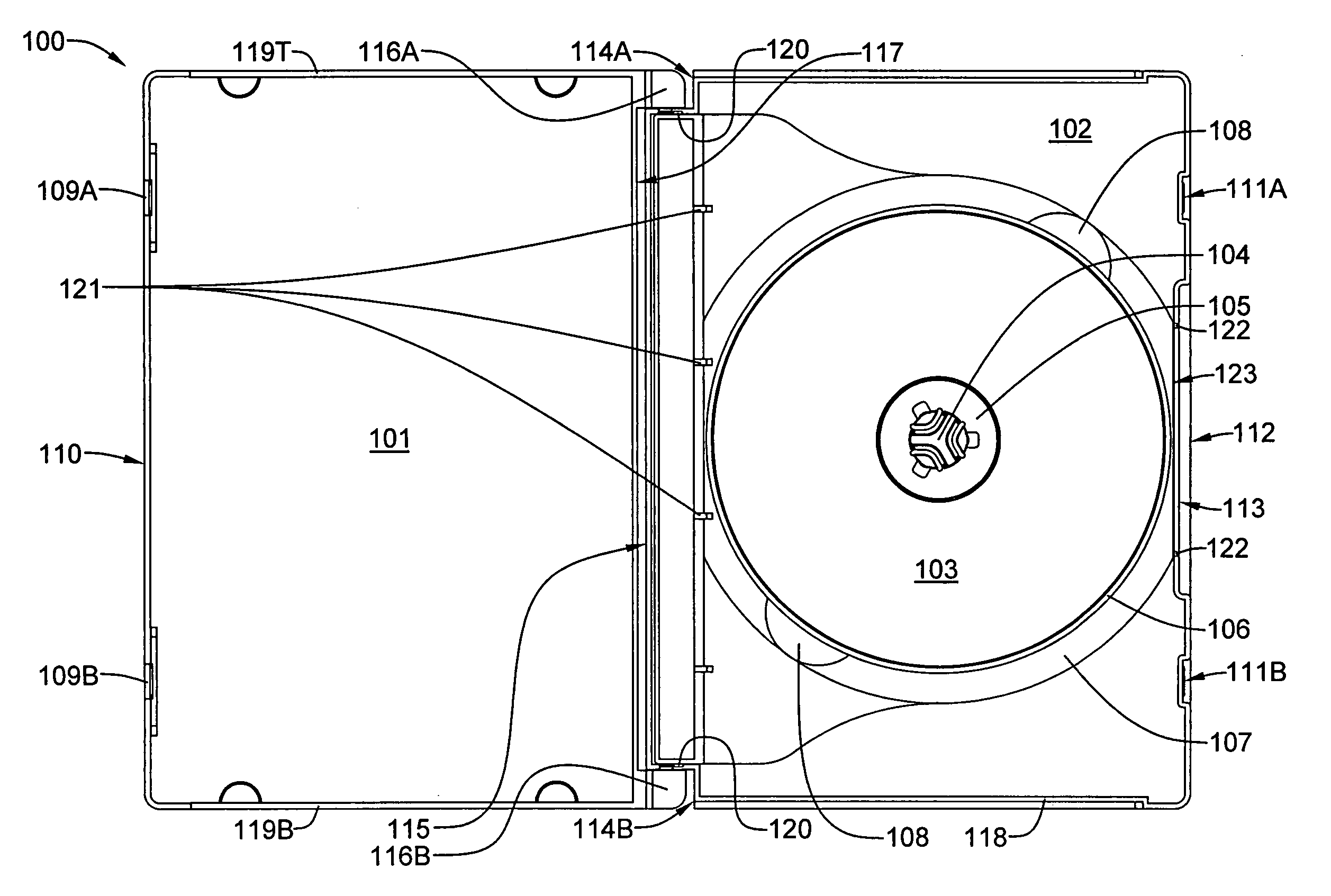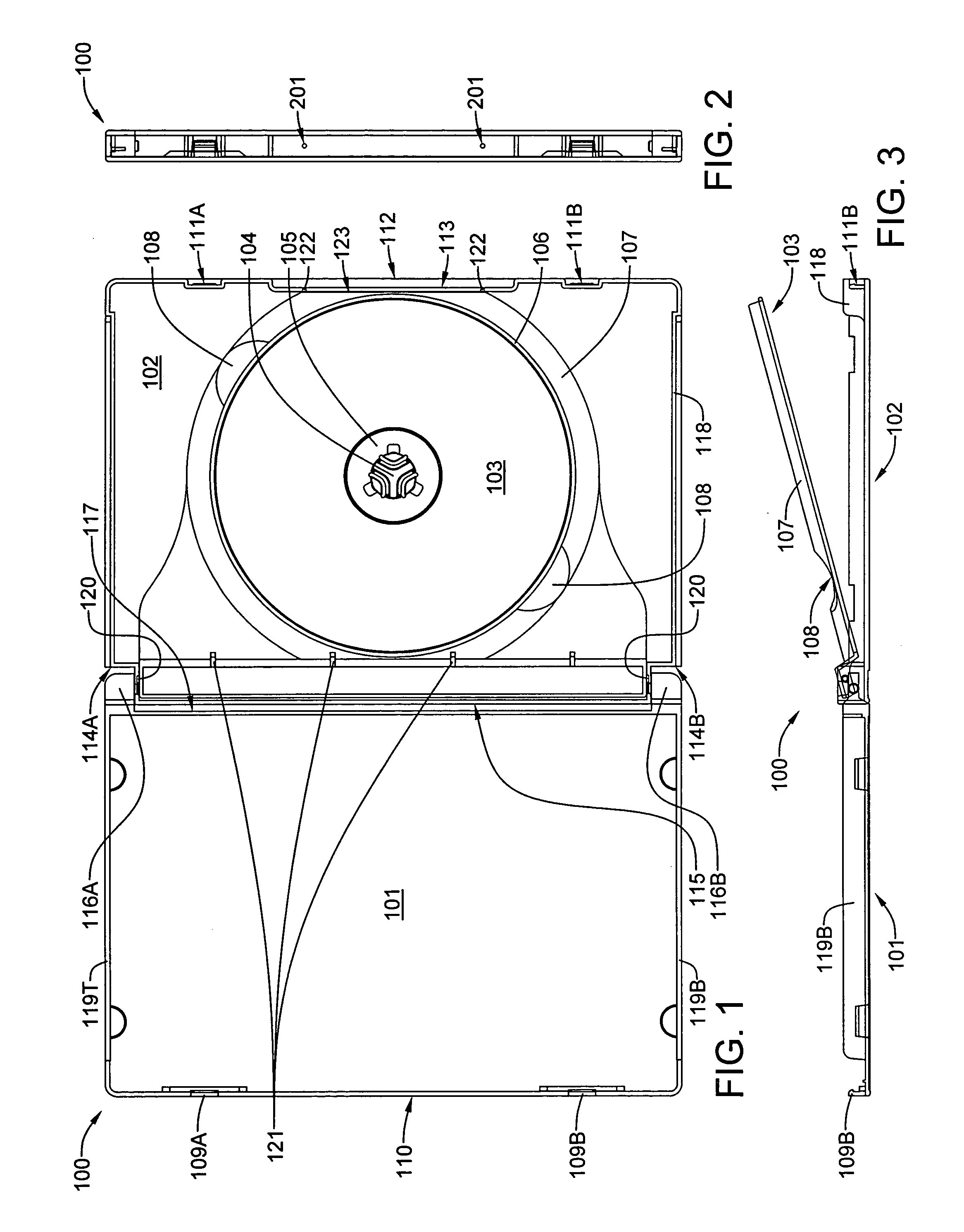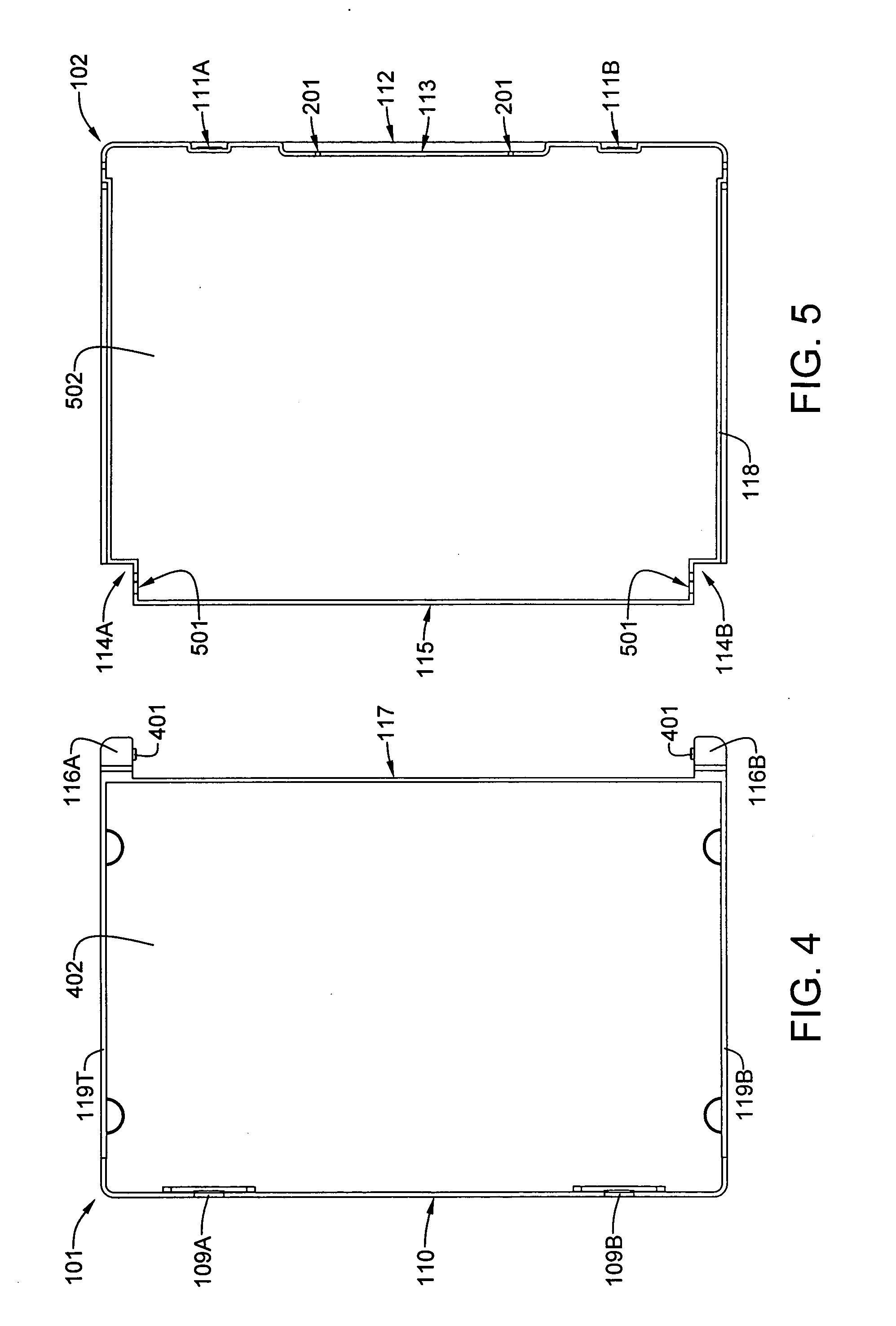Protective case for information storage disc
a protective case and information storage technology, applied in the field of protective cases, to achieve the effect of increasing structural strength, facilitating opening the case, and reducing mechanical damag
- Summary
- Abstract
- Description
- Claims
- Application Information
AI Technical Summary
Benefits of technology
Problems solved by technology
Method used
Image
Examples
first embodiment
[0041] Still referring to FIG. 1, it will be noted that the base member 101 incorporates a pair of hinge alcoves 114A and 114B, which are located at opposite ends of the rear edge 115 of the base member 102. It will also be noted that the lid member 101 incorporates a pair of hinge arms 116A and 116B located at opposite, adjacent corners on the rear edge 117 of the lid member 101. The lid member 101 and the base member 102 are hingeably coupled via a system of axially-aligned studs and apertures. For the preferred embodiment, each of the hinge alcoves 114A and 114B incorporates a cylindrical aperture that is axially aligned with the cylindrical aperture of the other hinge alcove. Each of the hinge arms 116A and 116B incorporates a pivot stud that is axially aligned with the pivot stud of the other hinge arm. By slightly distorting the lid member 101, the base member 102, or both, the lid member 101 can be pivotally attached to the base member 102. It will be further noted that the b...
second embodiment
[0050] Referring now to FIGS. 11 and 12, the hinge arm 117A of FIGS. 9 and 10 has been modified to remove additional polymeric plastic material by forming dimples in the upper and lower surfaces thereof. The modified second embodiment hinge arm 1101A is still solid from side to side through the pivot axis 1103.
[0051] Referring now to FIGS. 13 and 14, a third embodiment hinge arm 1301A retains the full height H2 of the jewel case. However, polymeric plastic material has been removed in the well 1302 shown in FIG. 13 and in the valley 1401 shown in FIG. 14. Nevertheless, the third embodiment hinge arm 1301A is still solid from side to side through the pivot axis 1103.
[0052] Referring now to FIG. 15 and 16, a second embodiment media tray 1501 completely covers the inner surface of base member 102. This may be an advantageous feature when a paper base member insert or label is used, as media tray 1501 will completely cover a full-size insert. Other than size, the primary difference bet...
PUM
 Login to View More
Login to View More Abstract
Description
Claims
Application Information
 Login to View More
Login to View More - R&D
- Intellectual Property
- Life Sciences
- Materials
- Tech Scout
- Unparalleled Data Quality
- Higher Quality Content
- 60% Fewer Hallucinations
Browse by: Latest US Patents, China's latest patents, Technical Efficacy Thesaurus, Application Domain, Technology Topic, Popular Technical Reports.
© 2025 PatSnap. All rights reserved.Legal|Privacy policy|Modern Slavery Act Transparency Statement|Sitemap|About US| Contact US: help@patsnap.com



